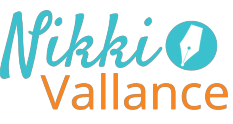After my visit to this year’s London Book Fair last month, already documented in my latest post, I realised there was a gap in my writing story. Part two covered the writing of Pivotal, from concept to first draft but as readers of the Book Fair post will already know, my novel is some way further down the road to publication. Convinced I had already written this post, I dug around in my drafts folder, and sure enough there it was. So, for the sake of completeness, here is More Books Than Bikinis- Part Three – First Draft to Submission.
Not long after the warm and fuzzy feeling of a successfully completed manuscript, came the realisation of the many more hours of hard work ahead; the editing and submission process or, in other words, the search for representation.
Edit. Edit. Edit.
Following advice from various sources, I left the first draft alone for a few weeks and returned to it with fresh eyes. There is a temptation to continually review everything you have written as you write. I had made this mistake and got stuck editing rather than moving forward. About half way through writing the book, I stopped worrying about overused vocabulary, the finer points of grammar and the elimination of extraneous adverbs and got on with the job of getting the story out of my head and onto paper.
Knowing I would need to edit and polish later, I annotated the longhand draft with prompts to ‘Check’ for continuity checking and ‘Alternative’ for repeated words. Then, as I typed up the second draft, I highlighted these in different colours to make the first edit as easy as possible. I picked up lots of tips from editors and other writers on how to self-edit which belong in a separate guide, but in summary: I read the work aloud to test readability; focused on finding strong verbs to describe the action; mapped the content back to an outline to pick up plot holes and loosely proofed the first full printed draft to clean up any obvious errors.
Next, I shared a clean, ring bound copy of the manuscript (version 5) with each of my early readers in turn, refining each time from their feedback. Although the story is complex with numerous strands, twists and reveals, I am pleased to say the feedback is overwhelmingly positive. It worked! Once the final draft had been proofed and formatted, I looked at commissioning either a freelance editor or manuscript review services. Funds permitting, I would have considered this step. On balance though, I decided to submit my self-edited work, knowing further revisions are likely to be required en route to publication.
Submit. Submit. Submit.
The submission process is a numbers game and it pays to get your ducks in a row before firing off multiple emails.
First, you need to understand your market. Who will your readers be? What are the different genres and which is your book most closely aligned with? Where would your book sit on the bookshelves? Initially I found this tricky. It felt a little odd, seeing the book as a commodity rather than a creative work. Once I got my head around it, by researching authors and recently published titles it became clear; Pivotal is a work of commercial women’s fiction.
Next, you need to make sure your submission to stands out from the crowd, for all the right reasons. Much like a job application, professionalism is important but in the end the information you provide must grab the agent’s attention. Bland and soulless won’t do. Your aim is to receive a request for the full manuscript. Identify your hook and choose your words carefully. I picked up some great advice from author, Graham Schimmin on query letters, writing a synopsis and elevator pitch. It’s never too early to start honing the pitch. Every time anyone asks you what your book is about you have an opportunity to practise. Long before my first draft was written, I had identified Pivotal as a relationship mystery but then would tie myself in knots trying to explain the ins and outs of the story or the character details. It took lots of practise but eventually became ‘a relationship mystery which explores the impact of a shared life-changing dilemma on four seemingly unconnected lives…’
Finally, each agent will offer representation to a very small number of writers, so a targeted approach was key. I did my research. The Writers’ & Artists’ Yearbook is a reliable source of agency information as a starting point. Luckily most agents have easily discoverable likes and dislikes, along with submission guidelines on their websites or agency profile pages. Quite a number have also given interviews or taken part in podcasts too, so it was worth digging a little deeper online to see what else I could find. I also got out to writer’s events, festivals and workshops. It’s a great way to meet agents, authors and fellow writers to pick up tips and investigate the market.
Keep on Keeping on
Having nailed my basic query letter, prepared my synopsis and sample chapters, I submitted in batches of three or four, using my earlier research to tailor both the selection of agents to my genre and my book to their interests. I invested the time to make each submission as tailored as possible. Showing you have taken the time to understand their requirements and reflect this understanding in your letter, won’t be an automatic ticket to a yes but will minimise the risk of an immediate no.
My submission count currently stands at seventeen and having received, and celebrated, only 5 rejections, I was told by an independent publisher that no news is definitely good news and by one of the agents at the London Book fair in early April that my book is a ‘promising script’ and that she will come back to me as soon as she can.
Whilst I am still focused on finding an agent and securing a deal with one of the large publishing houses, the same independent publisher gave me a plan B. She has told me to be patient, keep submitting and if I’ve no joy by September she will publish me! Make sure you are signed up to receive blog updates if you want to be sure to know what happens next…
Nikki Vallance © 2018

